You’ve bought your chickens and you’ve got your coop. But do you have all the accessories necessary to make the coop the best place for your birds? Here are some chicken coop must haves that every chicken owner should be aware of.
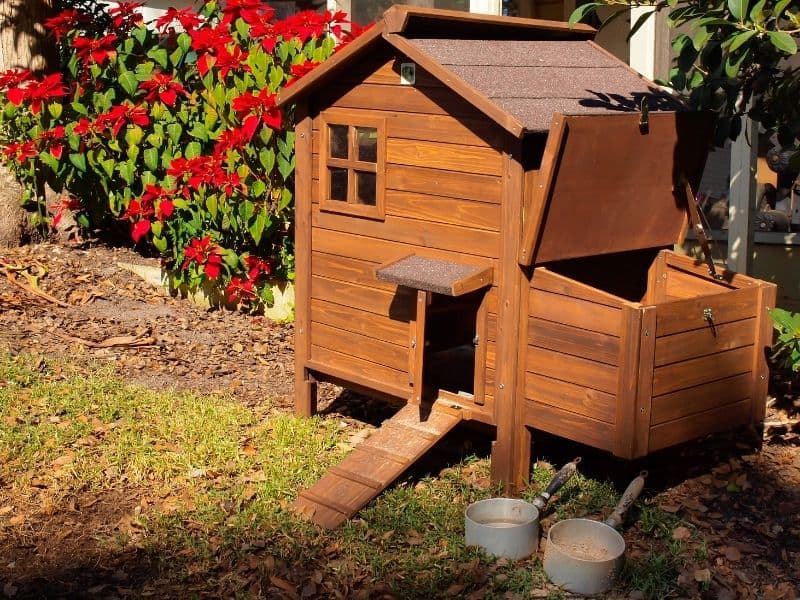
Chicken Coop Must Haves For A Healthy And Happy Flock
Accessories for the interior of the coop – every chicken coop should have five basic elements: roosting bars, nesting boxes, feeder, waterer, and be free from drafts.
Many of these chicken coop must haves can be free, but some will need a little investment. Learn more about the cost of raising chickens.
Learn everything you need to know about raising chickens from this book:
1. Roosting bars
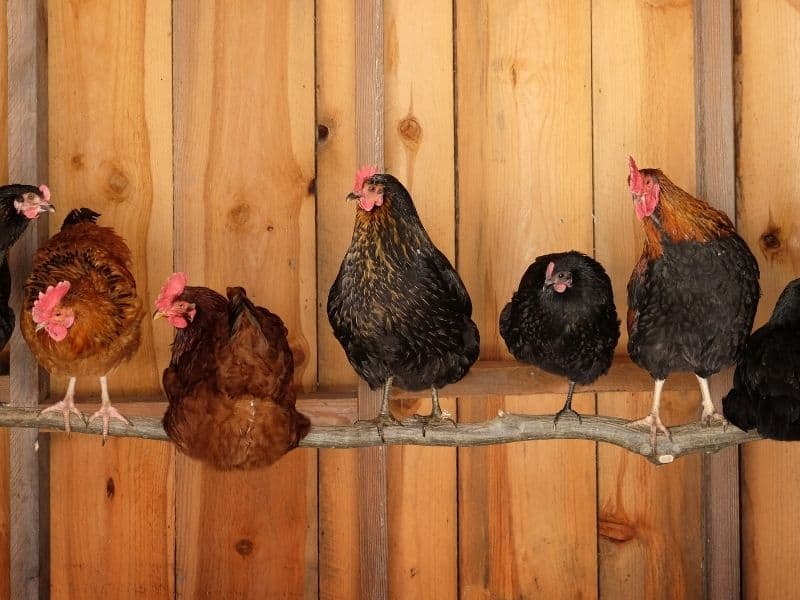
Most chickens love to sleep off the floor (among other reasons is to keep their booties clean, as they poop throughout the night while they sleep. Roosting bards should be placed off the ground and staggered so as to allow for the less dominant birds to be able to roost below the more dominant birds without getting pooped on.
The bars can be as simple as 2×4’s turned skinny side up and attached to the wall. I have also made roosting bars out of branches cut on my property for a more natural look.
You could use dowel rods too: just be sure that the circumference of the branch or rod is large enough for the birds to comfortably grip with their feet for maximum stability while sleeping.
Under your roosting bars, you may decide to place what we chicken folks call a “poop” board. This is simply a removable board, tarp, piece of linoleum, or any other such material that can be easily taken out of the coop and cleaned daily. Chickens do the majority of their defecating while they sleep and having something under the roost to catch their poop that you can simply remove and clean daily will make your life much easier.
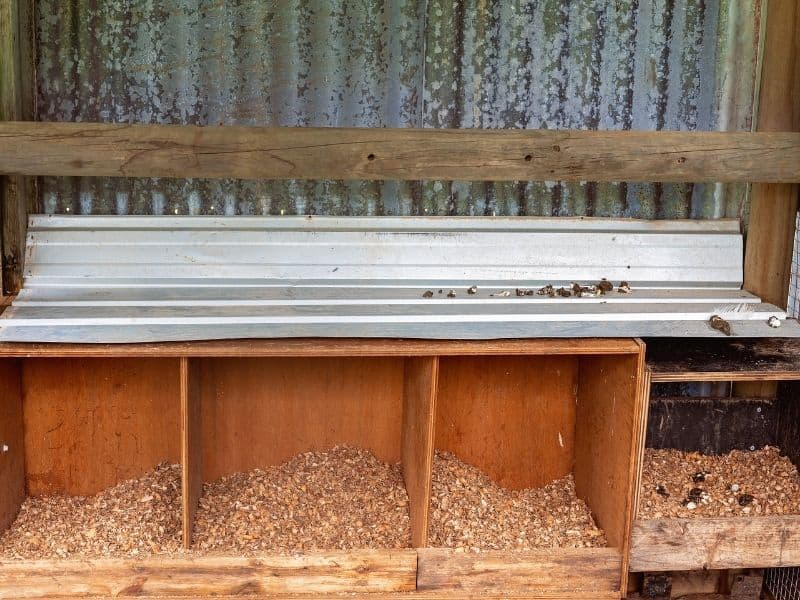
2. Nesting boxes
the rule of thumb for nesting boxes is one for every 4-5 chickens. As your birds begin to lay you will find that 9 times out of 10, no matter how many boxes you have, they will all fight over the same one. One of the many joys of owning chickens!
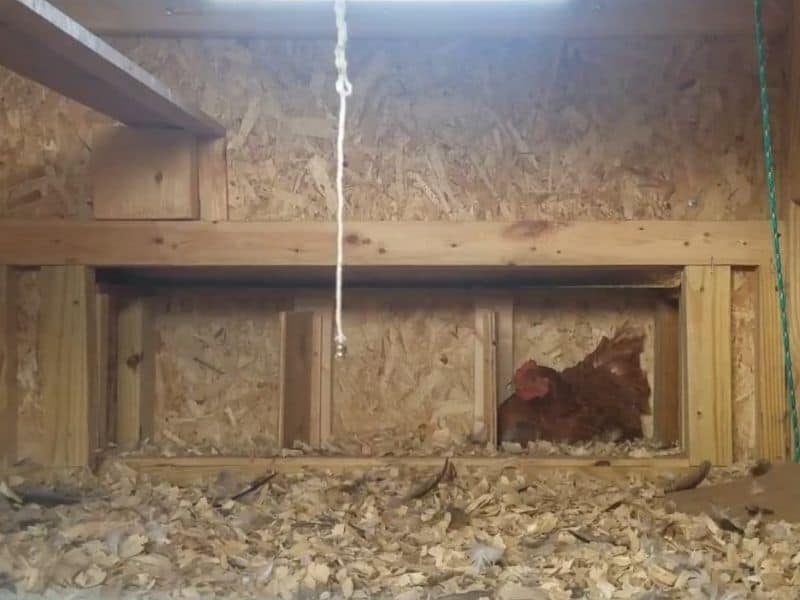
I have ten beautiful nesting boxes in my coop and all of my girls lay their eggs in two of the ten boxes. It’s really an instinctual thing. If they lay them in one place, it is easier for one hen to sit on and brood them for hatching. That’s nature’s way of preservation. So go ahead and build the appropriate amount of boxes, but don’t be surprised if there is a line of hens waiting for the favorite box.
Nesting boxes should be cleaned daily to ensure the eggs laid there are clean, and debris-free. Nesting box bedding can vary. Some folks use straw, others use pine shavings and some prefer the nesting pads that you can purchase online from Amazon. Whichever bedding you choose it should always be clean.
3. Feeders and waterers
I have two large feeders in my coop that suspend from the ceiling and have a cover on them to prevent the birds from perching on them and pooping in their feed.
I do not keep a waterer in my coop as my birds are only confined to the coop at night, at which time they are sleeping and do not drink water anyway. I originally had a waterer in my coop, but all it seemed to do was make a mess. The birds would tip it over, the automatic nipples would leak and then the bedding would begin to mold, and a damp environment in a coop is not what you want.
I now keep all of my water containers in the run. I’ve been doing this for over seven years and it has worked really well for me. The feed in the coop helps to keep the mice out of my run. When the coop is closed there is no way for mice to get in. Depending on your coop set up this may or may not be the case for you. You’ll have to keep an eye out to see if you notice any rodent activity.
There are many types of feeders and waterers on the market. Some folks build their own with large plastic trash cans and PVC pipes. There are many YouTube videos out there on homemade feeders and waterers. You may choose to purchase your feeders and waterers from your local feed store or online. Do a bit of research to determine what works best for you and your setup.
4. Ventilation that’s free from drafts
Most pre-made coops come with ventilation openings built-in. If you are building your own coop or converting an existing structure, be sure to place vents above the roosting bars to avoid drafts.
Chicken coops require proper ventilation to ensure that the air continues to move through the coop but a draft on your birds could cause illness or respiratory infection. Place your vents up high and your birds will be comfortable and happy.
Outside The Chicken Coop
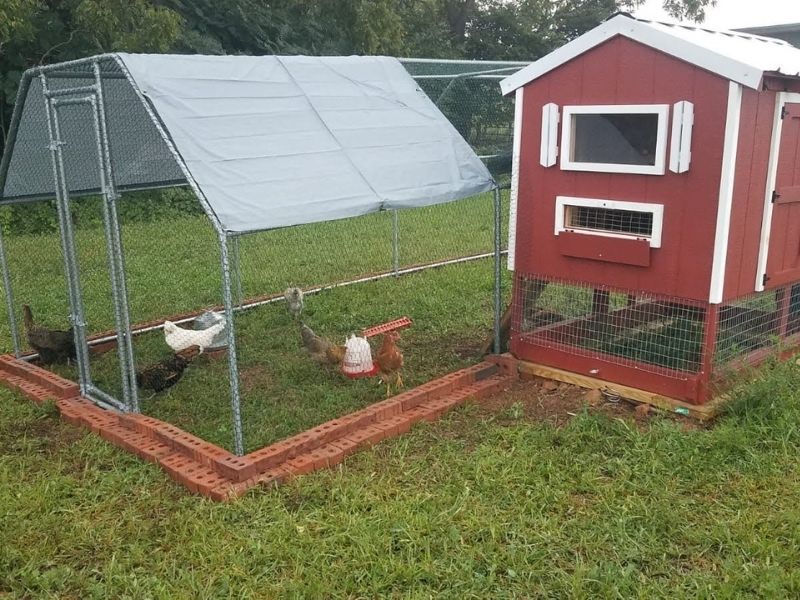
Most coops will have an attached run in which the chickens will live unless you plan to strictly free-range them. The run should be large enough so that your chickens can move around freely and have room to peck, scratch, and dust bathe. Here are some basic items your run should have:
5. Feed and water

You may decide to have these items in your coop but I also have feed and water available in the run to encourage the chickens to stay out of the coop during the day. This cuts down on the waste in your coop and makes for a quieter environment when hens are using the nest boxes to lay their eggs.
If you have feed in the run it would be a good idea to take it up or cover it in the evenings to deter rodents.
6. A dust bathing area
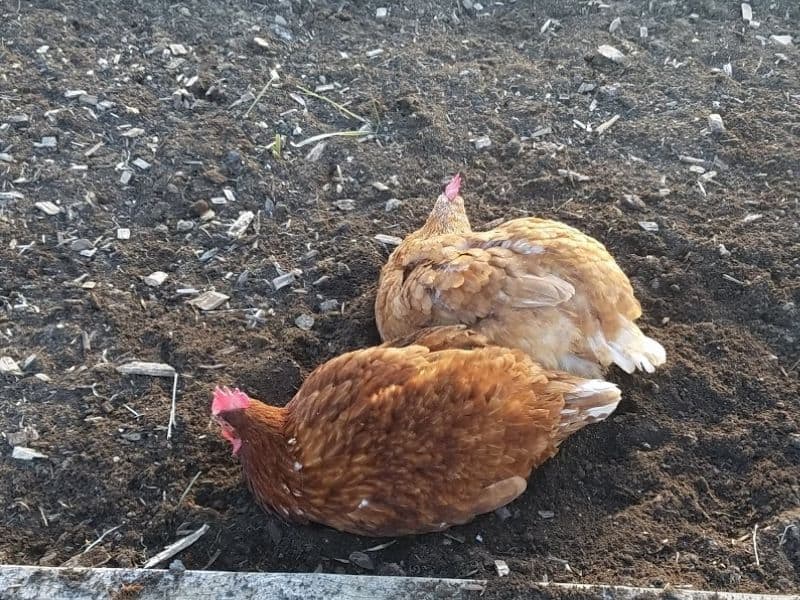
Chickens will take dust baths as a natural way to deter biting insects such as lice and mites.
Most chickens will dig their own holes to create a space to bathe in, but if you’d prefer to create one for them, you can. An old tire or a rubber feed tub works well for these purposes. Simply fill them with dirt, wood ash and some folks like to sprinkle in a bit of diatomaceous earth, voíla… instant dust bath. Don’t be discouraged if the chickens prefer to bathe elsewhere, just move your tire or tub to that area to encourage them to use it.
7. Perches
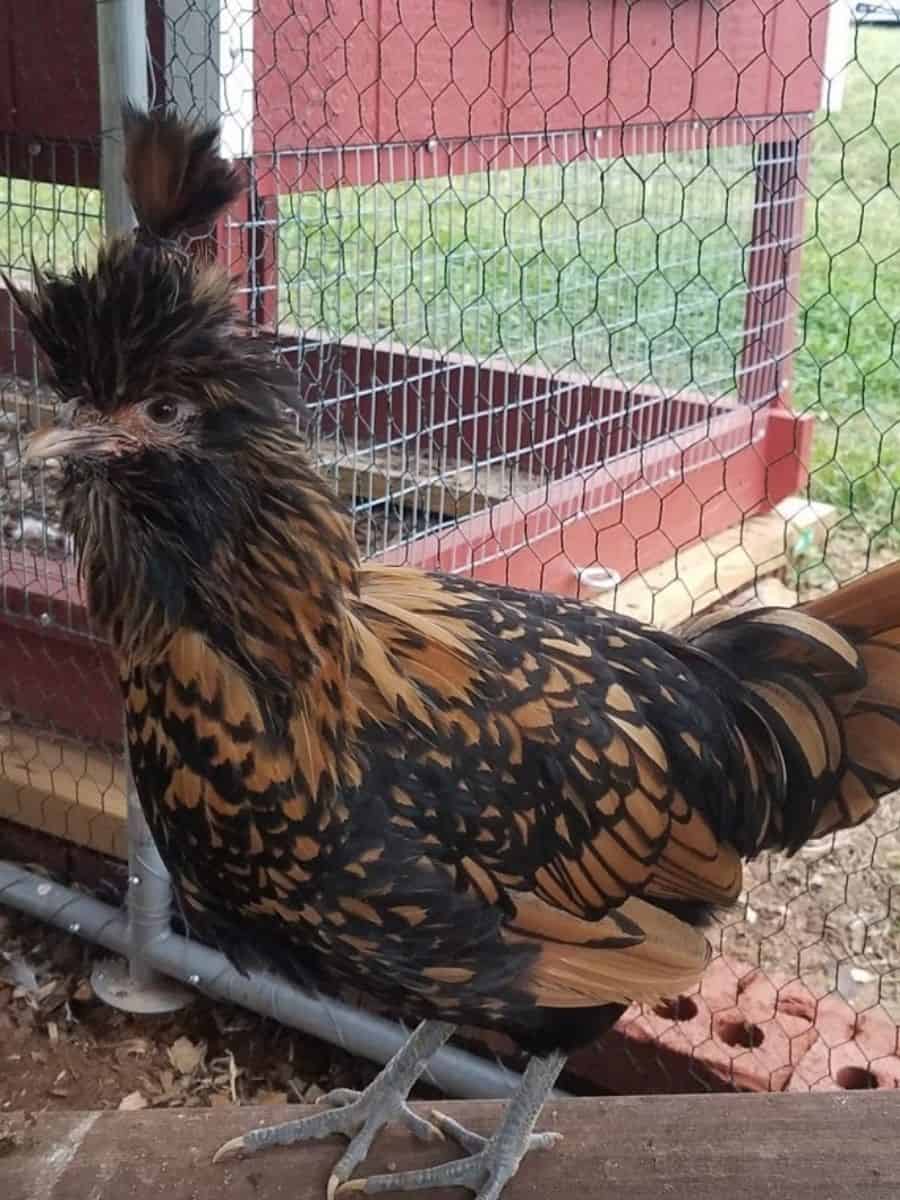
Chickens love to perch when preening feathers or just to take a short nap during the day. Place some perches in your run to satisfy their need to roost while in the run. They can be as simple as some branches found around your property and secured in a corner of the run.
8. Shade
This is probably the most important element to have for your run. Chickens need shade for protection from direct sun, especially during the hot summer months. While you will notice that they do love to sunbathe (we all need vitamin D), they also need a break from the sun as well. Make sure there is plenty of shaded area in your run.
9. Toys and distractions
Chickens, like humans, can get bored when confined to a space with nothing to keep them occupied. Here are a few extra items you can place in your run to keep your flock happy:
- chicken swing
- children’s xylophone
- mirrors
- lettuce piñata
- Flock Block (sold at TSC, or you can get it delivered if you buy from Amazon).
By providing these basic elements you should have a happy flock that will bring you joy for years to come.
Frequently asked questions about chicken coops
How big do my coop and run need to be?
You’ll need 2-3 square feet of space per bird inside the coop and 8-10 sf in the run. Be sure to keep in mind any additions you may plan to add to your flock when deciding on your coop and run. Always build larger just in case.
Do chickens get up at night for food and water?
They do not. Chickens do not see well in the dark and sleep through the night. They will not get off the roost to eat or drink until daylight.
Can I grow grass in my run for the chickens to eat?
Chickens love to scratch and peck, so growing grass in the run is near impossible. You can build a greens garden out of wood and hardware cloth to put in the run. The plants will grow up to the covering and they will be able to peck at the greens through the hardware cloth without destroying the roots. There are several great videos out there on how to make one yourself.
How often do you clean your coop and run?
I personally try to completely clean the coop once every 10-14 days. Some folks prefer to do a deep litter method in the winter months but unless done properly it can cause more harm than good. I live in zone 7 and we don’t typically get really harsh winters, so regular cleaning is what works best for me and my flock. As for the run, I have 2000 sf for my birds to roam in. I throw down scratch in the mornings to encourage them to peck and scratch which keeps the soil worked. I will occasionally put down pine shavings to help absorb the water during our rainy seasons.
Which is better, a walk-in coop or an elevated coop?
This depends on personal preference. If you have a lot of birds and a large coop, a walk-in is going to be much easier to clean and navigate. If you have a small flock of 4-8 birds, an elevated coop may suit your needs just fine.
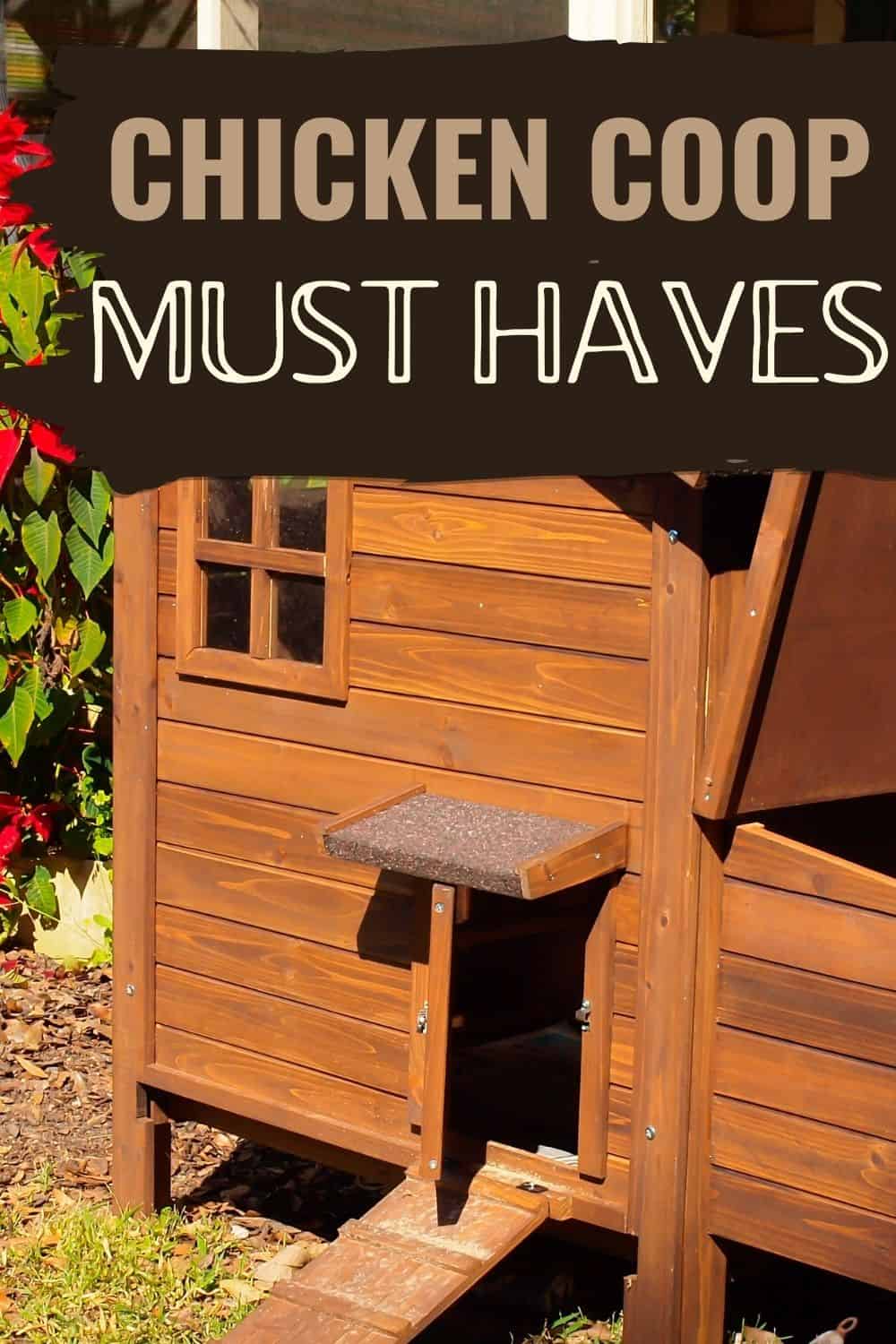

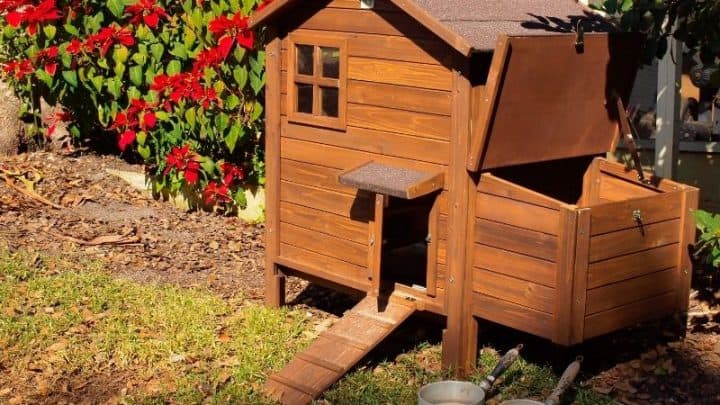




Kassidy
Friday 31st of March 2023
This was great thank you
Quick Guide To Raising Backyard Chickens
Thursday 28th of July 2022
[…] 9 Chicken Coop Must Haves – The Basics And More […]
The Basics Of Raising Baby Chicks - From Brooder To Coop
Thursday 19th of August 2021
[…] can make a perch for them to roost on and practice for when they will eventually be moved to the outdoor coop. Place some blocks for them to hop onto to break up the monotony of being in the […]
How To Get Rid Of Flies In The Chicken Coop
Wednesday 14th of April 2021
[…] Related: chicken coop must haves […]